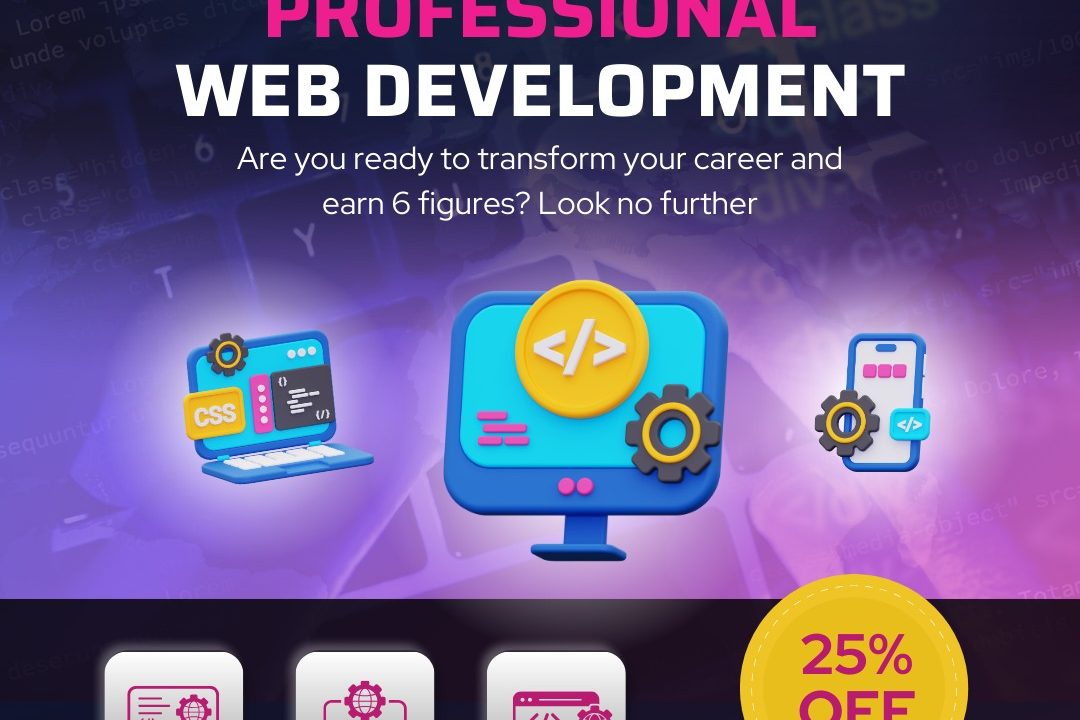Top Selenium Interview Questions
Top Selenium interview questions typically focus on assessing a candidate's understanding of web app
Top Selenium Interview Questions
Preparing for top Selenium interview questions is essential for anyone looking to advance their career in software testing and automation. These questions typically explore a candidate's familiarity with Selenium's functionalities, best practices, and real-world application in testing web applications. Understanding these topics not only helps candidates demonstrate their technical competence but also showcases their ability to leverage automation to enhance testing efficiency and effectiveness. By mastering these queries, candidates can effectively convey their skills and readiness to contribute to an organization's testing initiatives, making them a valuable asset in a competitive job market.
To Download Our Brochure: https://www.justacademy.co/download-brochure-for-free
Message us for more information: +91 9987184296
Preparing for top Selenium interview questions is essential for anyone looking to advance their career in software testing and automation. These questions typically explore a candidate's familiarity with Selenium's functionalities, best practices, and real world application in testing web applications. Understanding these topics not only helps candidates demonstrate their technical competence but also showcases their ability to leverage automation to enhance testing efficiency and effectiveness. By mastering these queries, candidates can effectively convey their skills and readiness to contribute to an organization's testing initiatives, making them a valuable asset in a competitive job market.
Course Overview
The ‘Top Selenium Interview Questions’ course is designed to equip learners with the essential knowledge and skills required to excel in job interviews focused on Selenium and automation testing. This comprehensive program covers a wide range of frequently asked questions, including foundational concepts, key features of Selenium, best practices, and real-world applications. Participants will engage in hands-on exercises and projects, allowing them to deepen their understanding and practical implementation of Selenium in various testing scenarios. By the end of the course, learners will gain the confidence to tackle interviews successfully, showcasing their expertise and enhancing their career prospects in the growing field of software automation testing.
Course Description
The “Top Selenium Interview Questions” course is meticulously designed to prepare participants for success in job interviews that focus on Selenium and automation testing. This course covers a wide array of commonly asked interview questions, exploring essential concepts, practical applications, and advanced features of Selenium. With a mix of theoretical knowledge and hands-on projects, learners will not only understand the fundamentals but also gain real-world experience in automating tests. By the end of the course, participants will be well-equipped to confidently answer interview questions, demonstrating their proficiency and enhancing their employability in the competitive software testing job market.
Key Features
1 - Comprehensive Tool Coverage: Provides hands-on training with a range of industry-standard testing tools, including Selenium, JIRA, LoadRunner, and TestRail.
2) Practical Exercises: Features real-world exercises and case studies to apply tools in various testing scenarios.
3) Interactive Learning: Includes interactive sessions with industry experts for personalized feedback and guidance.
4) Detailed Tutorials: Offers extensive tutorials and documentation on tool functionalities and best practices.
5) Advanced Techniques: Covers both fundamental and advanced techniques for using testing tools effectively.
6) Data Visualization: Integrates tools for visualizing test metrics and results, enhancing data interpretation and decision-making.
7) Tool Integration: Teaches how to integrate testing tools into the software development lifecycle for streamlined workflows.
8) Project-Based Learning: Focuses on project-based learning to build practical skills and create a portfolio of completed tasks.
9) Career Support: Provides resources and support for applying learned skills to real-world job scenarios, including resume building and interview preparation.
10) Up-to-Date Content: Ensures that course materials reflect the latest industry standards and tool updates.
Benefits of taking our course
Functional Tools
1 - Selenium WebDriver
Selenium WebDriver is a core component of the Selenium suite, enabling automation by providing a programming interface through which users can write tests in multiple programming languages such as Java, Python, C#, and Ruby. WebDriver interacts directly with the web browser to emulate user actions, making it essential for testing web applications. Its ability to handle dynamic web elements and its support for modern web standards make it a preferred choice for developers and testers alike. This versatile tool allows fine grained control of browser actions and is widely regarded for its robustness and adaptability in various testing environments.
2) Selenium IDE
Selenium IDE, or Integrated Development Environment, is a user friendly tool that allows testers to record and playback browser interactions. It is particularly beneficial for those new to automation testing, as it offers an intuitive graphical interface for creating test cases without the need for extensive coding knowledge. With features such as recording tests, adding checkpoints, and exporting test scripts in different programming languages, Selenium IDE streamlines the initial stages of test automation. It proves to be a handy tool for rapid prototyping and validating test scripts before scaling them up to more complex frameworks.
3) TestNG
TestNG is a testing framework inspired by JUnit and NUnit, designed to cover all types of testing needs. It provides powerful annotations, parallel execution, and data driven testing capabilities, which can greatly enhance automation testing with Selenium. TestNG integrates seamlessly with Selenium WebDriver, allowing for structured organization of test cases and easy management of test execution. Through its intuitive reporting features and the ability to manage test dependencies, TestNG makes it easier to write and manage test cases, ultimately improving productivity and test accuracy.
4) Maven
Maven is a build automation tool primarily used for Java projects that simplifies project management and builds processes. It plays a crucial role in Selenium projects by managing dependencies, ensuring that all required libraries and plugins are downloaded and integrated automatically. By using Maven, teams can streamline their testing setup, maintain consistency across environments, and reduce manual setup time. Its powerful object oriented project configuration simplifies the integration of Selenium with other tools, ensuring a smooth development lifecycle from coding to test execution.
5) Jenkins
Jenkins is an open source automation server that facilitates Continuous Integration (CI) and Continuous Deployment (CD) practices. Within the context of Selenium automation, Jenkins is used to automate the execution of tests triggered by changes in code repositories. It offers the ability to run tests on multiple browsers simultaneously and provides real time feedback on the quality of the deployment. By integrating Jenkins into the testing process, teams can ensure that their web applications are tested frequently and thoroughly, leading to higher quality software and faster release cycles.
6) Cucumber
Cucumber is a testing framework that supports Behavior Driven Development (BDD), enabling collaboration between non technical stakeholders and developers. It allows testing in natural language, making it easier for all team members to understand testing requirements. When used with Selenium, Cucumber allows for writing test cases in a human readable format, which enhances communication across teams. This integration helps bridge the gap between technical and non technical stakeholders, ensuring that business requirements are accurately reflected in automated tests and leading to more robust software quality assurance.
7) Docker
Docker is a containerization platform that allows developers to package applications and their dependencies into containers. For Selenium testing, Docker provides a consistent and isolated environment, ensuring that tests can run reliably across different systems. By using Docker, teams can quickly set up Selenium Grid and execute tests on multiple browser versions without the need to manage extensive infrastructure. The portability of Docker containers speeds up the testing process, as they can be easily shared and deployed in various environments, making collaboration and scaling of test automation more efficient.
8) Selenium Grid
Selenium Grid is a part of the Selenium suite that allows for the concurrent execution of tests across multiple browsers, operating systems, and machines. This feature drastically reduces testing time and increases efficiency by enabling parallel test execution. By distributing tests across a grid, teams can achieve quicker feedback on user stories and improve overall testing coverage. Selenium Grid is especially beneficial for large projects where executing test cases simultaneously can significantly speed up the process of quality assurance.
9) Robot Framework
Robot Framework is an open source automation framework that uses keyword driven testing. It is compatible with Selenium and provides a simple syntax for writing tests, making it accessible for testers who may not have strong programming skills. Robot Framework comes with a rich ecosystem of libraries and tools, enhancing the capabilities of Selenium tests. Its modular design allows easy customization, and it supports BDD, making it a versatile choice for organizations looking to streamline their testing processes through clear and maintainable test scripts.
10) APIs and Web Services Testing
With the rise of microservices architecture, it is critical to ensure that web services and APIs function correctly alongside UI testing. Using tools like Postman or RestAssured in conjunction with Selenium facilitates comprehensive testing strategies that cover both back end services and front end interfaces. This holistic approach to testing ensures that functionality remains intact, providing a complete verification of the application as users interact with it through different layers.
11 - Visual Testing Tools
Visual testing tools like Applitools offer automated visual validation of web applications. Integrating these tools with Selenium helps to ensure that UI elements render correctly across different devices and browsers. By using visual testing, teams can catch layout issues and visual discrepancies that traditional functional testing might miss. This adds an important layer to quality assurance, enhancing user experience and ensuring brand consistency.
12) Page Object Model (POM)
The Page Object Model is a design pattern that enhances test maintenance and reduces code duplication. By creating an object repository for web elements, testers can write cleaner, more organized code, making it easier to manage and update tests as the application evolves. POM supports better abstraction by separating test logic from the UI structure, which contributes to scalability and maintainability of Selenium automation tests.
13) Mobile Testing
As mobile usage continues to grow, testing mobile applications is becoming increasingly important. Tools like Appium can be integrated with Selenium to extend test automation to mobile devices, allowing teams to execute tests on both web and mobile apps using a unified approach. This capability ensures that users have a consistent experience across platforms, safeguarding the application's quality and performance.
14) Test Reporting Tools
Effective reporting tools such as Allure or ExtentReports provide detailed insights into test execution results. By integrating these tools with Selenium, teams benefit from clear visual presentations of test outcomes, including passed and failed tests, execution timelines, and logs. Comprehensive reporting aids in identifying areas of improvement and helps stakeholders understand the quality of the application at a glance, ultimately facilitating better decision making in the development process.
15) Training and Support
At JustAcademy, we recognize the significance of continuous learning and skill enhancement. Our certification programs are designed to equip individuals with the necessary knowledge and practical experience in automation testing using Selenium. With access to expert instructors, real time projects, and a collaborative learning environment, participants will be prepared to tackle challenges in the ever evolving landscape of software testing.
Browse our course links : https://www.justacademy.co/all-courses
To Join our FREE DEMO Session:
This information is sourced from JustAcademy
Contact Info:
Roshan Chaturvedi
Message us on Whatsapp:
Email id: info@justacademy.co











